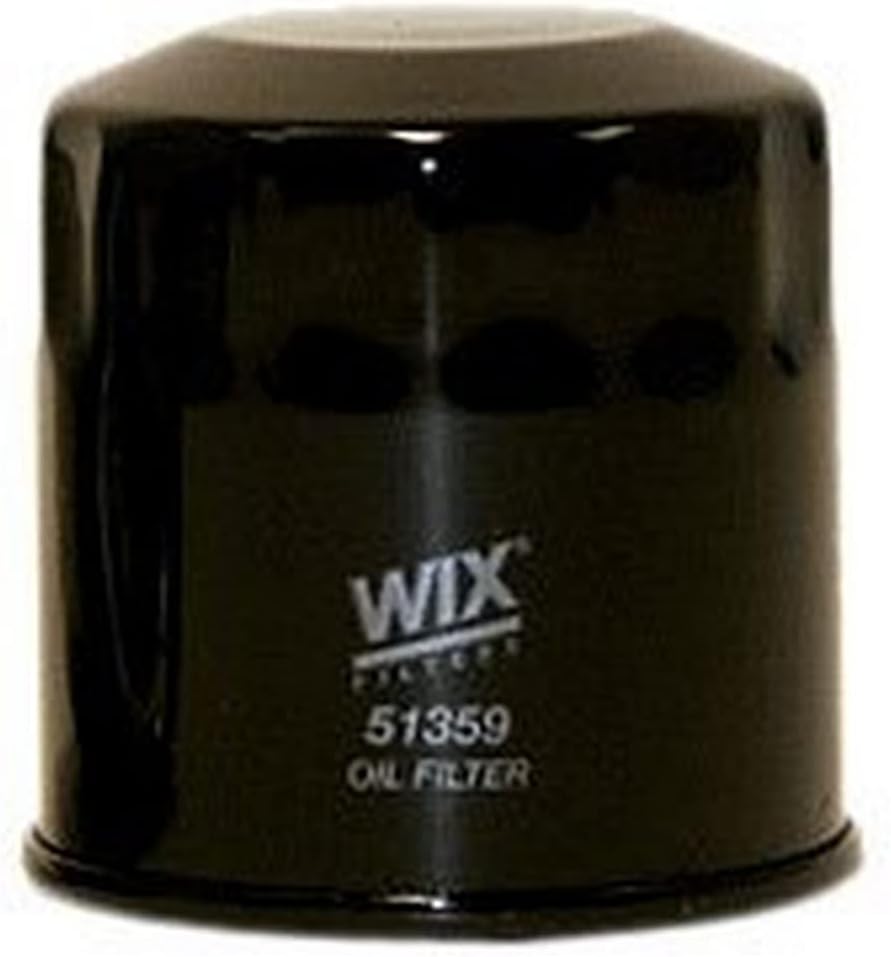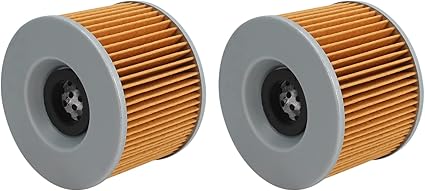Motorcycle oil filters come in several types, including cartridge, spin-on, and high-performance filters. Each type has unique advantages depending on your bike model, engine size, and riding style. Knowing the differences helps you make an informed choice, ensuring the filter fits perfectly and performs efficiently. Using the right filter not only protects your engine but also supports better fuel efficiency and reduced maintenance costs over time.
Riders who invest in a reliable filter experience smoother engine performance, longer lifespan, and improved overall motorcycle efficiency. Whether you ride daily or enjoy long trips, a well-chosen oil filter acts as the first line of defense for your bike’s health.
While selecting the best motorcycle oil filter is vital, it works best alongside regular maintenance. Routine oil changes, air filter care, and fuel system checks maximize engine health and performance. Combining a top-quality oil filter with consistent maintenance ensures safer rides, peak motorcycle performance, and long-term reliability for all types of riders.
Why Every Motorcycle Needs a Reliable Oil Filter
When it comes to keeping your motorcycle running smoothly, the oil filter is absolutely essential. It works hand in hand with the air filter, both of which are the unsung champions of engine protection and overall performance. If you neglect these components, dirt, debris, and harmful particles can sneak into your engine, leading to wear and tear, decreased efficiency, and potentially expensive repairs.
The oil filter does a fantastic job of catching impurities in the engine oil, making sure that only clean, well-lubricated oil flows through the moving parts. This helps reduce friction, prevents overheating, and ultimately extends the life of your engine. If your filter is clogged or of poor quality, it can hinder lubrication, resulting in premature wear. On the flip side, a dependable oil filter ensures optimal oil flow, which can enhance fuel efficiency and performance.Keeping your air filter in good shape improves throttle response and helps your engine run more smoothly, providing consistent performance.
Selecting the right filters for your motorcycle—whether you go for OEM or high-quality aftermarket options—has a direct impact on your bike’s engine protection and your overall riding experience. Regularly replacing these filters according to the manufacturer’s recommendations ensures you reap the full benefits of both air filtration and oil filtration.
In summary, a reliable oil filter is more than just a maintenance task; it’s a smart investment in your motorcycle’s longevity. When paired with a clean air filter, you’ll enjoy enhanced performance, smoother rides, and lower repair costs. Riders who prioritize the quality of their filters are sure to get more miles, more smiles, and greater confidence on every adventure.
How to Choose the Right Oil Filter for Your Bike
Selecting the right motorcycle oil filter isn’t just about fitting a part—it’s about protecting your engine, improving performance, and ensuring every ride is smooth. The right choice depends on a few key factors: bike type, engine size, and riding style.
1. Match the Filter to Your Bike Type
Cruisers, sport bikes, dirt bikes, and touring motorcycles all have different needs. Sport and performance bikes often benefit from high-performance oil filters that handle higher RPMs and oil flow. Off-road bikes may require filters that excel in dust and debris resistance.
2. Consider Engine Size and Power Output
you’ll need a filter with higher filtration capacity to keep contaminants out while maintaining smooth oil circulation. Smaller engines may not require such high capacity, but compatibility is still critical.
3. Think About Your Riding Style
A standard OEM-grade filter might be perfect. For long-distance touring or racing, a premium or synthetic media filter can offer better durability and longer service intervals.
4. Check Compatibility and Fit
A poor fit can cause leaks or reduced filtration efficiency.
5. Balance Cost and Performance
While budget filters may save money upfront, they might not provide the same engine protection as mid-range or high-end options. Investing in a quality filter helps extend engine life and maintain peak performance.
The best oil filter for your bike is one that matches your motorcycle’s specifications, supports your riding habits, and delivers reliable protection every time you hit the road.
Explore More - AutozMotoz
Common Mistakes When Replacing Motorcycle Oil Filters
A small mistakes can harm your bike’s performance and longevity. Knowing what to avoid is essential for safe and effective motorcycle maintenance.
1. Using the Wrong Filter Size
One of the most frequent errors is picking a filter that doesn’t match your bike’s engine specifications. A too-large or too-small filter can cause oil leaks, reduce engine protection, and even damage internal components. Always check your bike’s manual or manufacturer’s guide before purchase.
2. Improper Installation
Incorrect installation—like overtightening or not seating the filter properly—can lead to leaks or engine failure. Using the correct torque and following installation steps ensures the filter functions correctly.
3. Skipping the Gasket Check
Many riders forget to inspect or lubricate the gasket. A dry or damaged gasket can prevent a proper seal, causing oil loss and reduced performance. Always replace old gaskets and lightly oil them before installation.
4. Neglecting Regular
Replacement Intervals
Waiting too long to replace your filter reduces engine efficiency and can allow debris to circulate, causing wear. Following recommended service intervals keeps your bike healthy and improves fuel efficiency.
5. Ignoring Quality Filters
Using cheap or incompatible filters may save money upfront but risks engine damage. High-quality, compatible filters ensure optimal performance and long-term reliability.
Avoiding these common mistakes is key to motorcycle longevity and safety. Use correct sizes, follow proper installation steps, replace gaskets, adhere to replacement schedules, and invest in quality filters. These filter replacement tips help riders maintain peak motorcycle performance and prevent costly repairs.
Types of Motorcycle Oil Filters: Which One Suits Your Bike?
They are usually installed inside the engine and require no external casing.
Pros:
Easy to replace, lightweight, and cost-effective.
Cons:
Slightly less convenient to inspect and clean compared to spin-on types.
Cartridge filters work well for standard riding conditions and everyday riding.
Spin-on filters come in a sealed metal canister, making them simple to remove and replace.
Pros:
Easy installation, less messy, good for quick maintenance.
Cons:
Slightly heavier and more expensive than cartridge filters.
Spin-on filters are ideal for riders who prefer fast oil changes and minimal hassle.
Designed for sport bikes or long touring rides, these filters often use advanced media for better oil flow and filtration efficiency.
Pros:
Superior engine protection, longer lifespan, better performance at high RPMs.
Cons:
Higher cost and sometimes require special tools or installation care.
These are perfect for riders who push their bikes hard or ride in extreme conditions.
Choosing the right filter depends on your bike type, riding style, and maintenance preference. Regular replacement and using the correct filter model ensures engine longevity, consistent motorcycle performance, and fuel efficiency. By understanding the differences, you can pick the oil filter that best fits your riding needs while keeping your engine safe and efficient.
Best Recommended Top-Reviewed Motorcycle Oil Filter
disclosure: Affiliate from Amazon
A motorcycle oil filter is a component in your bike’s lubrication system that removes dirt, metal particles, carbon deposits, and other contaminants from the engine oil before it circulates back into the engine.Clean oil helps reduce engine wear, maintain performance, and extend engine life.
★★★★☆
Tips for Maintaining Engine Health Beyond the Oil Filter
Here are some practical tips to maintain engine health and ensure motorcycle performance.
Regular Oil Changes
Combine this with a reliable oil filter to maximize protection and maintain smooth engine operation.
Fuel Filter Care
A clogged or dirty fuel filter can restrict fuel flow, affecting engine efficiency and causing poor performance. Check your fuel filter periodically, especially if you ride in dusty or humid conditions. Replacing it as needed ensures your bike runs efficiently and prevents engine strain.
Air Filter Maintenance
We recommend check at least 3 months interval.
Coolant and Spark Plug Checks
Maintaining proper coolant levels prevents engine overheating, while well-maintained spark plugs ensure efficient combustion. Both contribute to overall engine longevity and smoother rides.
Riding and Storage Practices
Avoid aggressive starts and stops, and store your motorcycle in a dry, ventilated area. These simple practices help prevent unnecessary engine wear and keep all systems running efficiently.
Did you know that a motorcycle with a filthy air filter may lose up to ten percent of its potential performance? With that information, people may be asking themselves, “Do I need to tape my motorcycle air filter?” It is a common question that a lot of riders have.….continue
You definitely have heard the rumors about motorcycles and taking care of them, especially when it comes to oil. Clutches can slip if there is an excess of oil, which is something we need to comprehend if we wish to maintain the performance of our motorcycles…continue
Alright, let’s strip it down and keep things simple.Think of your bike’s chain like the MVP of the team. If you ignore it, you’re just asking for trouble—like, pushing your bike home trouble. Cleaning the chain isn’t some boring chore; it’s you taking care of your ride so it actually takes care of you back.….continue
Conclusion
Keep going your motorcycle’s engine goes beyond simply installing a high-quality oil filter. Combining regular oil changes, proper fuel and air filter care, and routine checks of coolant and spark plugs ensures long-lasting engine health and optimal motorcycle performance. By adopting these simple maintenance habits and practicing mindful riding, you protect your bike from unnecessary wear, improve fuel efficiency, and enjoy a smoother, safer ride. Consistency is key—well-maintained engines not only last longer but also deliver the reliable performance every rider needs.
Choosing the best motorcycle oil filter is a critical step in protecting your engine and ensuring peak performance. High-quality filters trap dirt, debris, and metal particles, preventing them from circulating through your engine. By selecting the right type—whether cartridge, spin-on, or high-performance—you can match your riding style, bike model, and maintenance routine, maximizing both engine protection and motorcycle performance.
Over and above the filter itself, maintaining overall engine health requires regular attention to oil changes, air filters, and fuel systems. Neglecting these can reduce efficiency, increase wear, and shorten engine life. A complete maintenance plan, combined with the right oil filter, enhances fuel economy, reduces costly repairs, and ensures smoother rides. Investing in top-rated filters and proper upkeep is not just a matter of convenience—it’s a long-term strategy for keeping your motorcycle running strong for years.
Frequently Asked Questions
A motorcycle filter, including air and oil filters, protects the engine from dirt and debris, ensuring smooth operation and long engine life. Effective filtration saves fuel and reduces maintenance costs.
Typically, you would replace an air filter every 12,000–15,000 miles, or more often if you ride in dirty conditions. Regular checks prevent engine wear and loss of performance.
Some popular types are foam, paper, cotton, and high-performance reusable. Each has pros and cons depending on airflow, cleanability, and lifespan.
Yes, filter types like cotton or foam filters can be reused after cleaning properly. Mild chemicals should be used to clean filter material.
It indicates by reducing engine power, poor fuel efficiency, unusual engine noise, and apparent dirt build-up. Regular inspection prevents engine damage of serious kinds.
Aftermarket filters may increase airflow and performance, but OEM filters deliver exact fit and factory protection. Choose based on your riding style and bike.
Although the consequences are unpredictable, efficiency may be marginally increased by smoother air movement. The greatest benefit is improved engine performance, not radical fuel savings.
Yes, clogged filters restrict airflow, strain the engine, overheat, and reduce performance. Immediate replacement is needed.
Most filters are easy to replace with minimal tools. See the book, get a good seal, and take a test ride and look for engine response.















